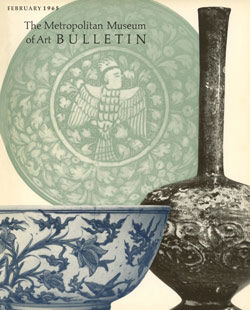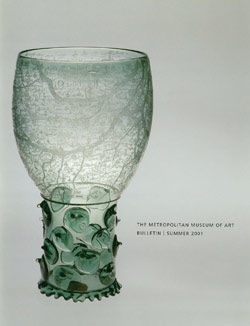Bowl with wheel-cut facets
Not on view
This hemispherical bowl may have been made by blowing molten glass into an open mold (though possibly it was free-blown); subsequently, four rows of oblong-to-round facets were wheel-cut and polished. The thick glass, originally pale green, has lost much of its surface color and gained extensive iridescence through weathering.
Faceted bowls such as this one are characterized by uniformity of shape, size, and arrangement of the facets in four or five rows. They represent the most widespread type of late Sasanian glass vessel, found in excavations of Mesopotamian and Iranian sites dating from the fifth to seventh century A.D. Some examples—probably carried along the Silk Road to the Far East by Persian merchants and traveling embassies—have been found in Japanese contexts, namely in the sixth-century tomb of the emperor Ankan and in the Shoso-in Treasure at Nara, which was assembled by the emperor Shomu in the eighth century.
Due to rights restrictions, this image cannot be enlarged, viewed at full screen, or downloaded.



